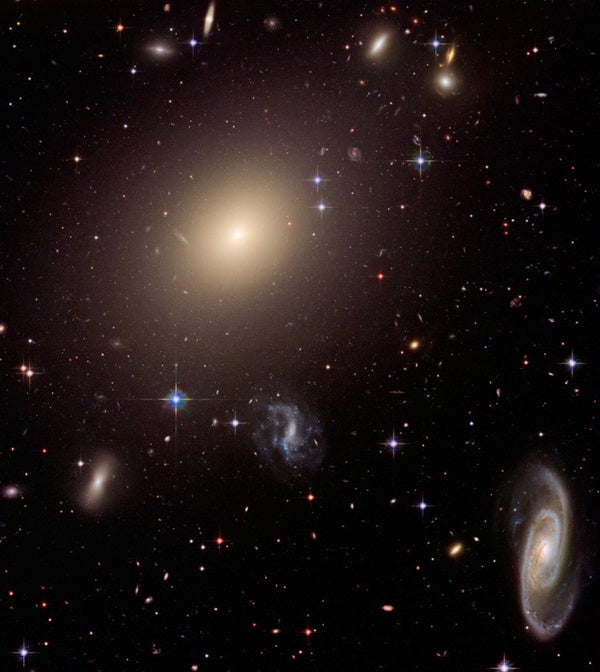Scientists at University College London (UCL) and the University of Cambridge in Massachusetts have developed machine-learning codes modeled on the human brain that can be used to classify galaxies accurately and efficiently. Remarkably, the new method is so reliable that it agrees with human classifications more than 90 percent of the time.
There are billions of galaxies in the universe containing between 10 million and a trillion stars. They display a wide range of shapes from elliptical and spiral to more irregular systems. Large observational projects — such as the Sloan Digital Sky Survey — are mapping and imaging a vast number of galaxies. As part of the process of using these data to better understand their origin and evolution, the first step is to classify the types of galaxies within these large samples. The 250,000 members of the public participating in the Galaxy Zoo project recently classified 60 million such galaxies by eye.
Now, a team of astronomers has used Galaxy Zoo classifications to train a computer algorithm, known as an artificial neural network, to recognize the different galaxy types. The artificial neural network is designed to simulate a biological neural network like those found in living things. It derives complex relationships between inputs — such as the shapes, sizes, and colors of astrophysical objects — and outputs — such as their type — mimicking the analysis carried out by the human brain. This method managed to reproduce over 90 percent of the human classifications of galaxies.
“We were astonished that a computer could do so well,” said Manda Banerji from the Institute of Astronomy at the University of Cambridge who led the research. “This kind of analysis is essential as we are now entering a new age of astronomical surveys. Next-generation telescopes now under construction will image hundreds of millions and even billions of galaxies over the coming decade. The numbers are overwhelming, and every image cannot viably be studied by the human eye.”
A large-scale sky survey in which the United Kingdom is playing a leading role is the Dark Energy Survey (DES) due to commence in 2011, which is expected to image 300 million galaxies over 5 years. Another survey, called the VISTA Hemisphere Survey being led by astronomers at the University of Cambridge, has just started taking data and will image galaxies over the entire southern hemisphere.
“While human eyes are very efficient in recognizing patterns, clever computational techniques that can reproduce this behavior are essential as we begin to push the boundaries of our observable universe and detect more distant galaxies,” said Ifer Lahav, head of astrophysics at the University of California, Los Angeles. “This study is an important step in that direction.”










